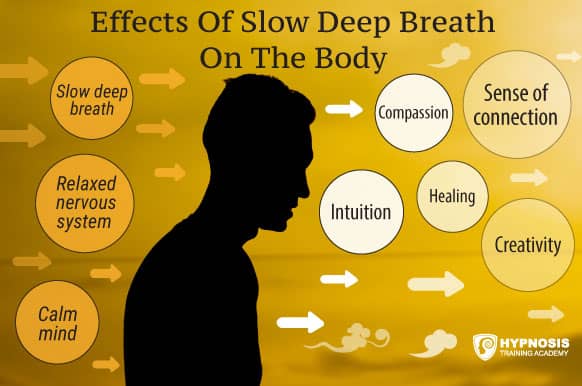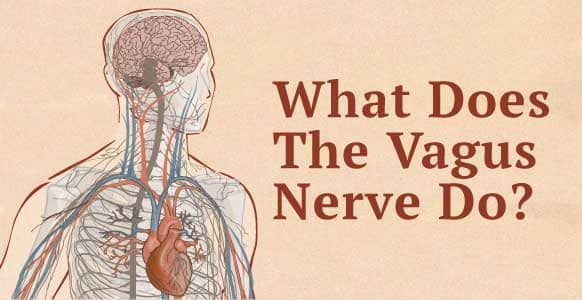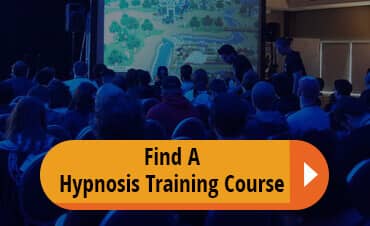![Yogic Breathing For Hypnosis: 3 Easy Techniques To Ground & Relax Your Clients Before Inducing A Hypnotic Trance [Includes Infographic] Yogic Breathing For Hypnosis: 3 Easy Techniques To Ground & Relax Your Clients Before Inducing A Hypnotic Trance [Includes Infographic]](https://hypnosistrainingacademy.com/wp-content/uploads/2019/05/yogic-breathing-for-hypnosis.jpg)
When it comes to healing practices, often the best practitioners call on a variety of tools when working with clients. In this article, we’re going to look at the benefits of yogic breathing for hypnosis, and 3 easy techniques to ground and relax your clients before inducing a hypnotic trance.
So let’s dive on in…
One of the reasons hypnosis is so popular is due to how streamlined, fast and effective it is; sometimes you can get to the core of an issue in as little as one session.
There’s no doubt about it… once your subject or client is in a hypnotic trance, and you’re equipped with the right techniques, you can help them resolve everything from fears and phobias, to overcoming anxiety and self-esteem issues.
But as mentioned above, this can only happen after the gateway to the unconscious mind has been opened – or in other words, when your client is in a hypnotic trance – meaning your job as a hypnotist is to find the right keys to open this door.
And as you might have experienced, some clients are easy to hypnotize. Whereas others have a more difficult time relaxing and trusting the process, and ultimately going into a trance state.
Both types of clients are great to work with because you get to put the full range of your skills to the test, after all, it would be boring if everyone fell into a trance simply after counting one, two, three!
So the main issue with the latter variety – the clients who are more difficult to hypnotize – is really a matter of time. As fun as hypnotic inductions are, the real change work only begins once someone is in a trance, so it’s important you’re able to induce a trance fairly quickly, especially if you have a packed schedule of clients to see.
But of course, time isn’t the only constraint. After all, not everyone can be hypnotized, sometimes a person’s critical conscious mind is in such a state of high alert it can’t or won’t let their defences down. Perhaps they’re just too skeptical, or maybe they have had people abuse or manipulate them in the past, so they’re wary. Understandably, the conscious mind is simply trying to protect them.
But assuming this isn’t the case, that you’re working with a client who is receptive and believes in the power of hypnosis, however, they’re difficult to hypnotize because they’ve arrived at their session feeling very stressed or distracted, it’s important to have a few tricks up your sleeve to help them quickly relax and get grounded.
There are many hypnosis and self-hypnosis techniques that you can use to do just this, which we share extensively on this blog. But in this article, we’re going to do something a little different and explore some of the yogic breathing techniques that the yogis have long used to see how they can complement your hypnosis skillset. Use them to ground clients before inducing a hypnotic trance to get them into a relaxed state, or share this article with them so they can practice them at home.
How The Breath Can Be Used To Trigger The “Rest & Digest” System For Deep Relaxation
The breath has profound effects on the nervous system, if consciously controlled it can have an energizing or relaxing effect.
Slowing the breath down and gently extending the exhalation activates the “rest and digest” mode (the Parasympathetic Nervous System, PNS). It therefore has a calming and relaxing effect on the body and mind, bringing about a sense of receptivity and centeredness as illustrated in the diagram below:

Or as Timothy McCall explains in his breakthrough book, Yoga As Medicine:
To fully derive the benefits of breathing techniques and to subsequently come into a receptive state prior to your session, the type and quality of the breath must first be established.
There are 3 parts to each breath: inhalation, retention and exhalation. The retention and exhalation are key to the health benefits and will be used in the techniques below.
In exhaling at length the lungs are being rid of stale air allowing a deep surge of freshly oxygenated air back in.
Yogic breathing exercises, pranayama (literally meaning breath control) focus on a prolonged retention and exhalation. Pranayama comes from prana meaning life force, or energy. The equivalent in the Chinese system is Chi. Prana is life force energy and vital for nourishing and maintaining the body.
Pranayama techniques are traditional yoga practices to assist in expanding the vital force and channelling it through the nadis (energy channels of the body) to purify and revitalize the body, mind and spirit.
The type of breathing that brings deep and beneficial breath is known as diaphragmatic breathing. In itself this is a yogic practice and of immeasurable benefit in bringing the body and mind into a state of calm and centeredness.
Key to this type of breath is an understanding of how the diaphragm works. The diaphragm is a dome shaped sheet of muscle located under and attached to the ribs. Above it sit the heart and lungs, below it sit the abdominal organs, it is attached to the lower spine by a thick tendon. On inhaling the ribs fill with air the diaphragm contracts and moves down pushing the abdomen outwards. On exhaling the diaphragm relaxes, moving back up and pushing the air out of the lungs, the belly as a result moves in a bit.
Simply put: inhale belly rises, exhale belly falls.
![[INFOGRAPHIC] Yogic Breathing For Hypnosis: 3 Easy Techniques To Ground & Relax Your Clients Before Inducing A Hypnotic Trance](https://hypnosistrainingacademy.com/wp-content/uploads/2019/05/yogic-breathing-for-hypnosis-infographic.jpg)
In short, these breathing techniques develop concentration by focusing the mind, remove stress and anxiety by creating calmness and peace by activating the Parasympathetic Nervous System (rest and digest mode), plus, they also boost the immune system by lowering the Sympathetic Nervous System (fight or flight) response. The perfect state to put your clients in before hypnosis, wouldn’t you agree?
Additionally, they’re effective tools for your clients to take home with them given that they can be done at home, at work, in the car (with the exception of Nadi Shodhana while driving!). Or for you to use yourself to get into the essential “H+” state so you can help your clients make powerful transformations.










![[ADVANCED GUIDE] How To Master Hypnotic Regression Therapy - Part I: Essential Principles To Profoundly Transform Your Subject’s Emotional Trauma [ADVANCED GUIDE] How To Master Hypnotic Regression Therapy - Part I: Essential Principles To Profoundly Transform Your Subject’s Emotional Trauma](https://hypnosistrainingacademy.com/wp-content/uploads/2016/09/hypnotic-regression-therapy-essential-principles.jpg)

